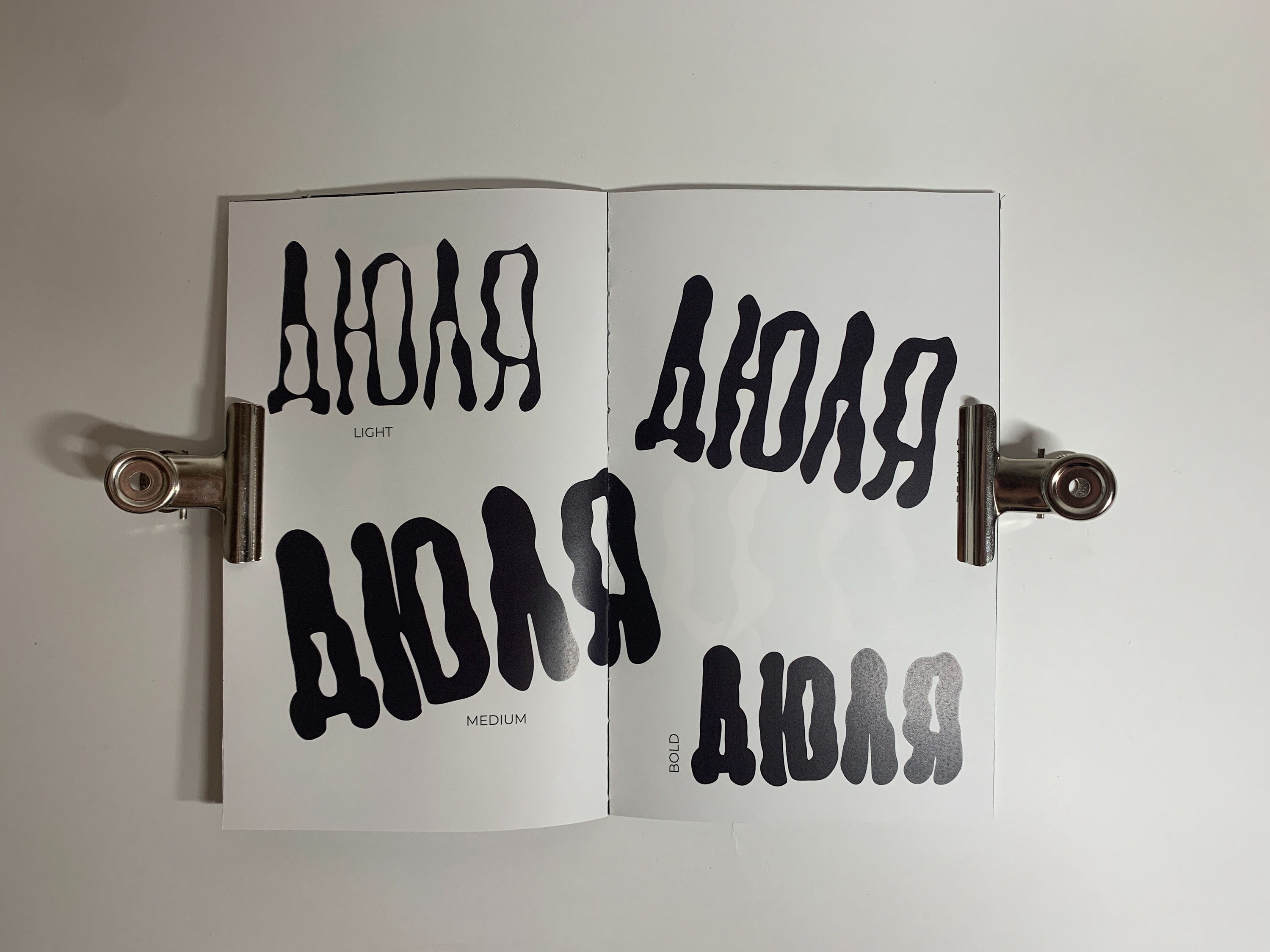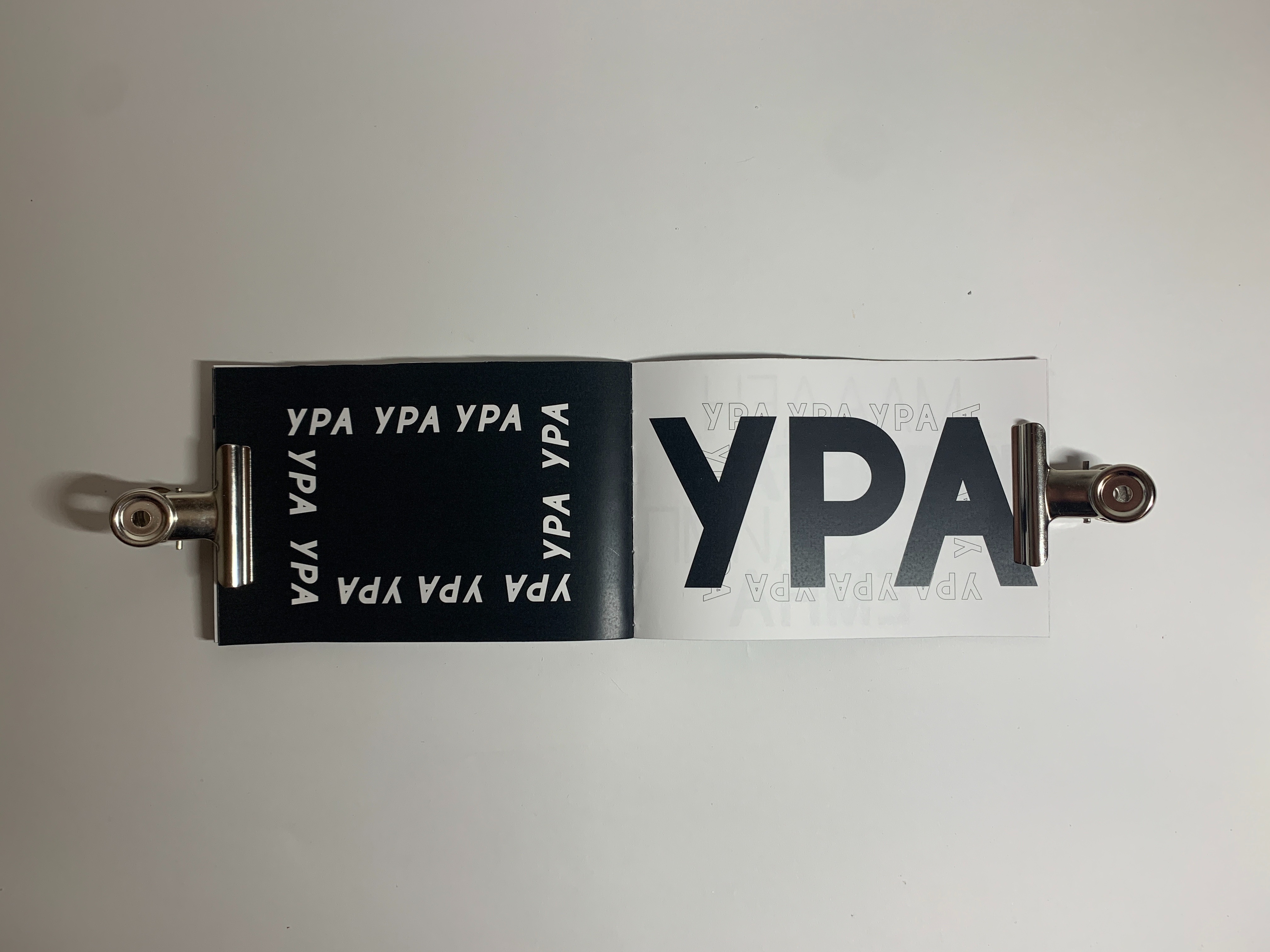


Cyrillic Typography is my thesis project which explored the history and development of Cyrillic letterforms, primarily in Bulgaria and Russia, and examined how history and culture had an impact on the stylistic variations of the letters in each region. The project is an exploration of the stylistic variations, their significance, their history, and is a visual representation on the importance of localization and allowing for shaping and expressing local identity through type.
Cyrillic Typography is my thesis project which explored the history and development of Cyrillic letterforms, primarily in Bulgaria and Russia, and examined how history and culture had an impact on the stylistic variations of the letters in each region. The project is an exploration of the stylistic variations, their significance, their history, and is a visual representation on the importance of localization and allowing for shaping and expressing local identity through type.
Cyrillic Typography is my thesis project which explored the history and development of Cyrillic letterforms, primarily in Bulgaria and Russia, and examined how history and culture had an impact on the stylistic variations of the letters in each region. The project is an exploration of the stylistic variations, their significance, their history, and is a visual representation on the importance of localization and allowing for shaping and expressing local identity through type.






How did history and culture influence the development of Cyrillic letterforms, and what is the importance of localization in shaping local identity through type? Due the belief that stylistic variations are just for aesthetic purposes, and not because of local identity and history, localized letterforms are often disregarded and viewed as unnecessary. This project is aimed at breaking that belief through educating on the topic, and developing typefaces that are inclusive of localized letterform variations, to show that it is necessary to design them in order to represent local identity.
How did history and culture influence the development of Cyrillic letterforms, and what is the importance of localization in shaping local identity through type? Due the belief that stylistic variations are just for aesthetic purposes, and not because of local identity and history, localized letterforms are often disregarded and viewed as unnecessary. This project is aimed at breaking that belief through educating on the topic, and developing typefaces that are inclusive of localized letterform variations, to show that it is necessary to design them in order to represent local identity.
How did history and culture influence the development of Cyrillic letterforms, and what is the importance of localization in shaping local identity through type? Due the belief that stylistic variations are just for aesthetic purposes, and not because of local identity and history, localized letterforms are often disregarded and viewed as unnecessary. This project is aimed at breaking that belief through educating on the topic, and developing typefaces that are inclusive of localized letterform variations, to show that it is necessary to design them in order to represent local identity.















Cyrillic Typography is a project consisting of five-components, a brief history book and four typefaces that support localized letterforms, that all serve to collectively outline the history of Cyrillic typography, the importance of localization and how and why the letterforms were designed the way they were. The goal of this project is to bring attention to this question, and to allow for expression of national identity in all countries using Cyrillic letterforms, and will teach other designers and typographers about the importance of localized letterforms. This will allow for future development of localized letterforms to allow expression and reflection of identity through letterforms.
Cyrillic Typography is a project consisting of five-components, a brief history book and four typefaces that support localized letterforms, that all serve to collectively outline the history of Cyrillic typography, the importance of localization and how and why the letterforms were designed the way they were. The goal of this project is to bring attention to this question, and to allow for expression of national identity in all countries using Cyrillic letterforms, and will teach other designers and typographers about the importance of localized letterforms. This will allow for future development of localized letterforms to allow expression and reflection of identity through letterforms.
Cyrillic Typography is a project consisting of five-components, a brief history book and four typefaces that support localized letterforms, that all serve to collectively outline the history of Cyrillic typography, the importance of localization and how and why the letterforms were designed the way they were. The goal of this project is to bring attention to this question, and to allow for expression of national identity in all countries using Cyrillic letterforms, and will teach other designers and typographers about the importance of localized letterforms. This will allow for future development of localized letterforms to allow expression and reflection of identity through letterforms.